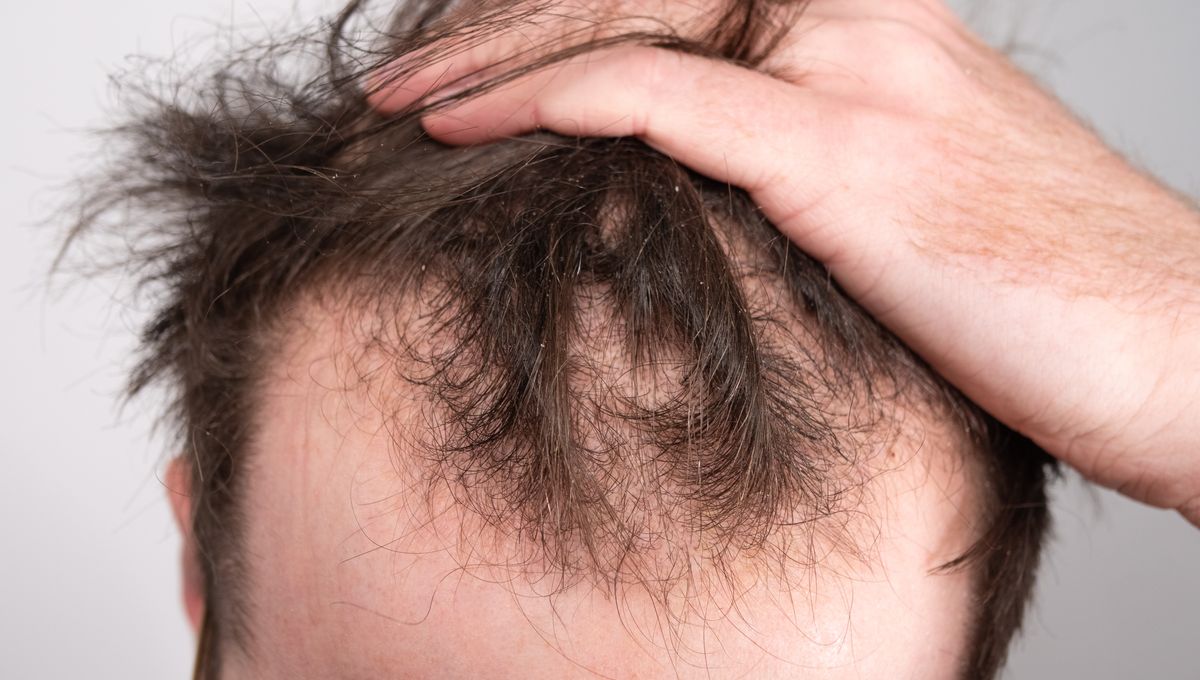
Put down the rosemary oil and pause the red light therapy, research suggests the secret to curing male pattern baldness could lie in a sugar that occurs naturally in our bodies.
In a mouse model of testosterone-driven hair loss, the sugar, called 2-deoxy-D-ribose, stimulated hair regrowth just as effectively as existing treatment minoxidil – the active ingredient in Rogaine.
Though commonly referred to as male pattern baldness, the condition, also known as hereditary-patterned baldness or androgenetic alopecia, affects women too. In fact, up to 40 percent of people experience it, making it the most common cause of hair loss worldwide. Symptoms typically begin in a person’s 20s and 30s, or after menopause. We still don’t know for sure what causes it, but it’s thought that a combination of genetics, hormones, and aging all play a part.
Treatment options are currently limited, so breakthroughs like this one, even if they’re limited to mice for now, are very promising.
“Male pattern baldness is such a common condition, affecting men all over the world, but at the moment there are only two FDA licensed drugs to treat it,” Professor Sheila MacNeil, Emeritus Professor of Tissue Engineering at the University of Sheffield, said in a statement.
“Our research suggests that the answer to treating hair loss might be as simple as using a naturally occurring deoxy ribose sugar to boost the blood supply to the hair follicles to encourage hair growth.”
You might remember the name deoxyribose from science class – it’s the sugar that, along with phosphate, makes up the backbone of DNA. As a result, it plays an important role in DNA stability, replication, and repair.
The team were initially investigating its capacity to speed up wound healing by promoting blood vessel formation, before noticing that mice treated with the sugar had much faster hair regrowth.
Pivoting to study its potential as a hair loss treatment, the researchers smeared a small dose of the sugar, in gel form, onto balding male mice. They also tested some mice using minoxidil, and some with both deoxyribose and minoxidil.
Within weeks, minoxidil and the sugar gel promoted a similar level of hair regrowth (80 to 90 percent), however no significant benefit was observed by applying the two in combination.
The scientists still don’t understand quite how the deoxyribose gel stimulates longer and thicker hair growth in mice, though they suggest it could have something to do with increased blood supply to the hair follicles. Because of this, it may also work on other causes of hair loss, such as chemotherapy-induced alopecia.
It remains to be seen if the same effects can be replicated in humans, but if they can, this could prove an inexpensive alternative to the current treatment options for male pattern baldness.
“This is a badly under-researched area, and hence new approaches are needed,” write the authors.
“The research we have done is very much early stage, but the results are promising and warrant further investigation,” concluded MacNeil. “This could offer another approach to treating this condition which can affect men’s self-image and confidence.”
The study is published in Frontiers in Pharmacology.
Source Link: This Sugar Could Be A Cure For Male Pattern Baldness – And It’s Been In Our Bodies All Along